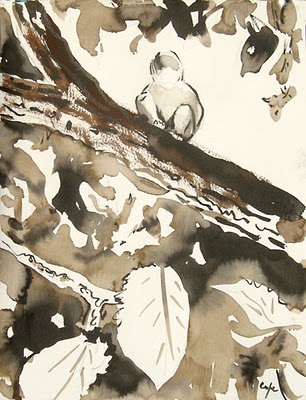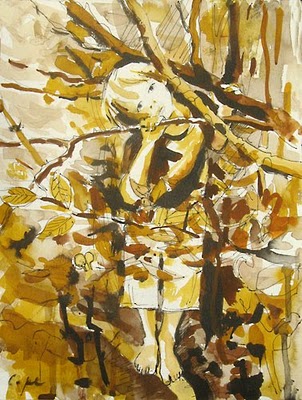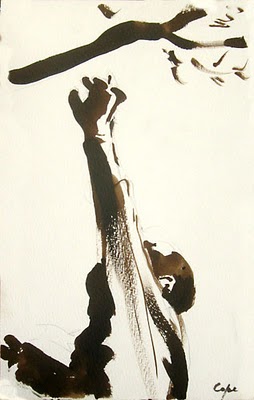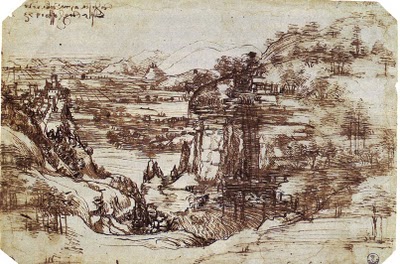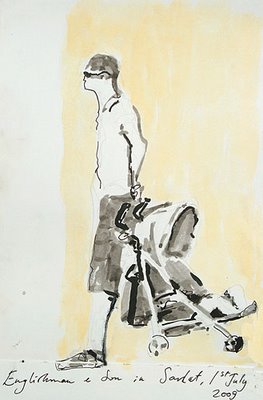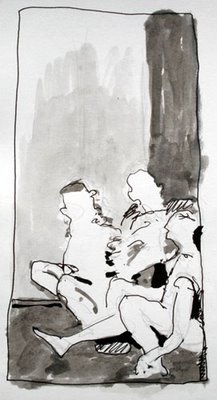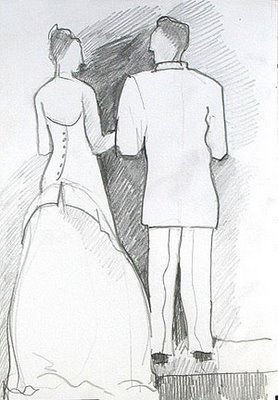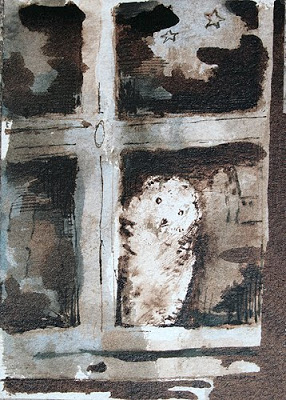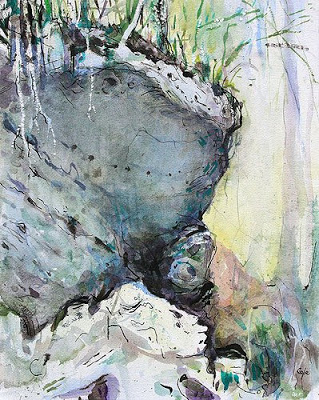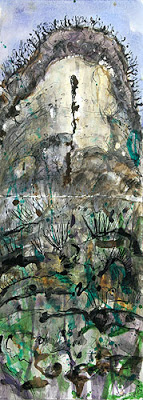pen & ink wash drawing 3 of 3 illustrations for a book.
Category: Pen and Ink
Pen & Ink drawings with a nib or with a wash, a biro or a plume. Mostly monochrome, sometimes in sepia or chinese ink. Hatching, scribbling & Sumi-e.
Tree Climbing for Boys: In
2 of 3 illustrations for a book
Tree Climbing for Boys 1
One of three illustrations for a story about a boy climbing a tree.
Leonardo Da Vinci : Rocky Landscape Studies in Pen & Ink
LEONARDO DA VINCI ‘Study of a Tuscan Landscape – Val d’Arno’ 1473 Pen & Ink, nib on vellum Approx 15 x 22 cm Uffizi Museum LEONARDO DA VINCI ‘Study of a Ravine in a Rocky Landscape’ C.1486 Pen & Ink, nib on vellum Approx 22 x 15 cm Windsor Leoni Volume Been looking again at…
Croquis des Familles en Vacances à Sarlat
‘Englishman & Son in Sarlat, 1st July 2009’ Pen & Ink 15 x21 cm (approx 6 x 8,2 nches). © Adam Cope NFS proud of this one, on th enail… yes! He was so tall, like a leopard, a sprinter, an athelete, his baby on tow behind him… 10 minute sketch in the crowds, on…
Dessins et Encres de Sarlat par Nuit
dessins (fr) = drawings (en) encres (fr) = inks(en) Sarlat is a town near me in south west france where i exhibit nuit (fr) = night(en) Some pen, brush & inks from my 15 x 23 cm sketchbook. Night time in the town of Sarlat, on holiday …. we enter another world. The crowds, all…
Sketches of a Wedding
A5 sketchbook pencil’Sur la Vif’ or ‘On the Hoof’ Sketches of a Wedding Sketches A5 ink brush pen A lovely wedding in the vines. Lots of cameras, so here’s one of yours truly. Note the champagne. [button color=”green” size=”medium” align=”center” link=”https://www.artists-atelier.com//piantings/music”]more gesture drawings of musicians[/button]
Quatre Carte-Postales de Mon Co-Locataire, l’Hibou
I’ve been invited to exhibit in the 4eme Festivale de Flore Faune en Périgord. Details & dates to follow in next post. Here’s what I’m putting in, boxed up along with the bilingual explanation notes. Quatre Carte-Postales de Mon Co-Locataire, l’Hibou (fr) = Fur Post Cards of my Room Mate, the Owl. (en) >>>>>>>>>>>>>>>>>>>>>>>>>>…
Rock Formations – John Ruskin – Prehistoric Shelters in the Dordogne
a prehistoric shelter… Crazy cliff faces that I wrote about in ‘how-to-draw-rocks’ & elsewhere… click on the rock category to see them all. The above watercolour portrays a prehistoric shelter. These ancient places for me feel charged with … our beginnings as a species. What was once there & what might be there…
Font de Gaume, Dordogne
‘Font de Gaume’ 2004 Ink & Watercolour. double spread A5 sketchbook © The Artist. Ne jamais dire “Fontaine, je ne boirai pas de ton eau” – Périgordien Populaire Font de Gaume is probably the most famous prehistoric painted ‘grotte’ (cave) in Les Eyzies (go abit further up the Vezérè & you arrive at Lascaux).It’s geography…

